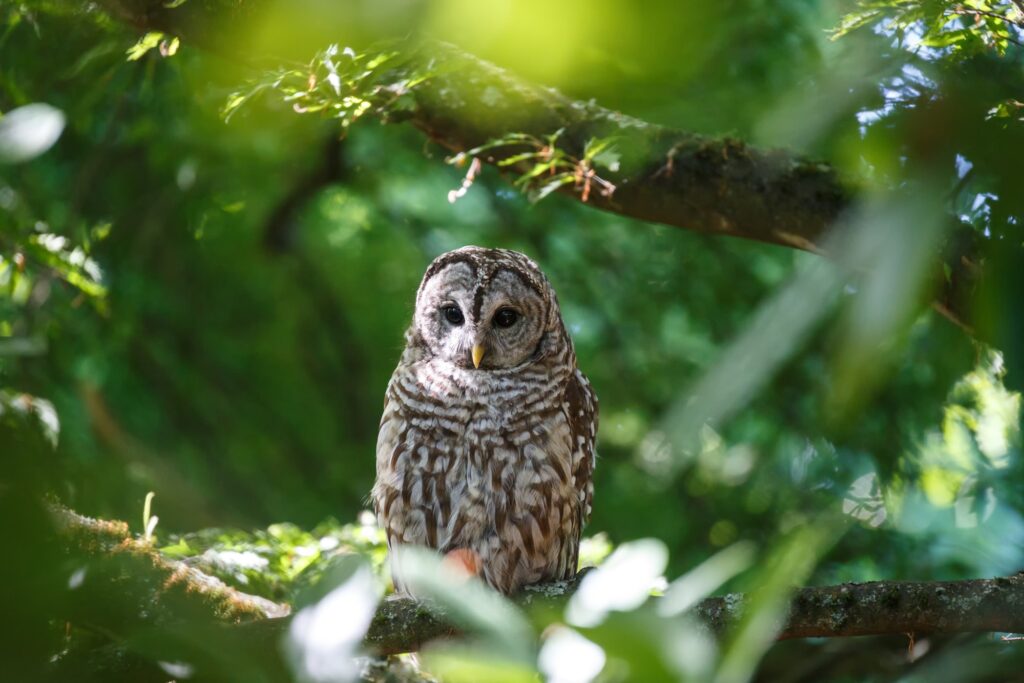New Jersey is easily one of the smallest states in the United States. But don’t count them out on your search for owls; the Garden State packs around 480 bird species into its borders, according to the New Jersey State Bird List Committee!
This is a mind-blowing number when compared to the state’s size, and it encompasses the huge variety of birds in the state! This makes New Jersey the perfect place to spot some of North America’s coolest and most exotic species of owls.
Today, we’re taking a closer look at the 10 owl species you’ll find in the state, including a few of the rare ones. Let’s check them out!
Eastern Screech-Owl
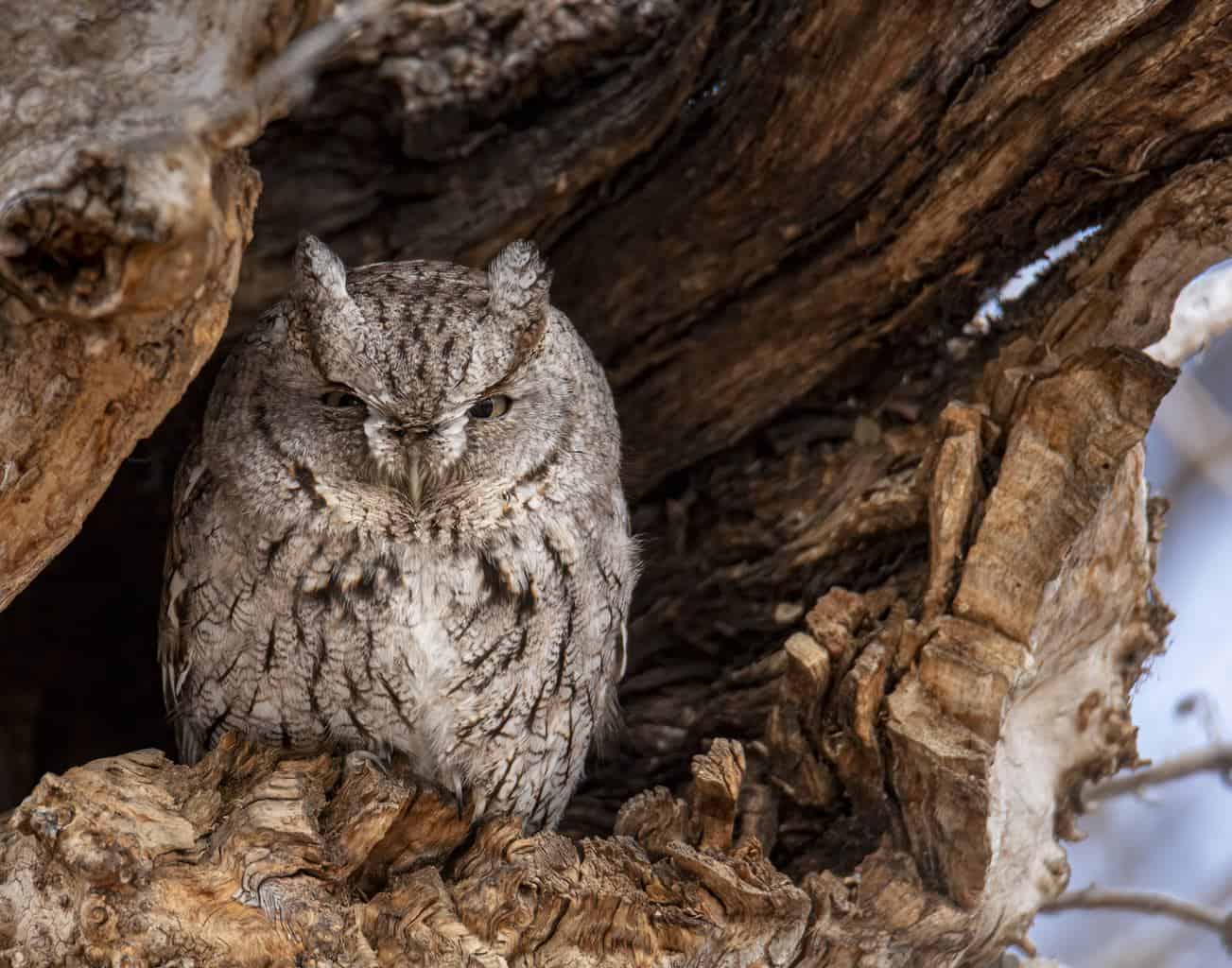
- Scientific Name: Megascops asio
- Length: 6.3-9.8 inches
- Weight: 4.3-8.6 ounces
- Wingspan: 18.9-24.0 inches
Kicking off our list is one of the state’s most popular owls. It happens to be one of the smallest species, too. Meet the eastern screech-owl.
Eastern screech-owls are known for their small size and stocky appearance. The bird occurs in two varieties, which are either a grey morph or a rufous (reddish-brown) color.
Combined with the bird’s small size, these colors give the screech-owl excellent camouflaging abilities during both the night and day. Another distinguishing physical feature of this species is the earlike tufts of feathers on their heads that give them a sharp appearance. They also move them around to communicate with mates and warn competitors.
These birds are one of the most well-adapted species to living around urban and manmade structures. You’ll have the most luck spotting them in natural tree cavities in agricultural landscapes, but you can still find them nesting in artificial nesters, too.
Great Horned Owl
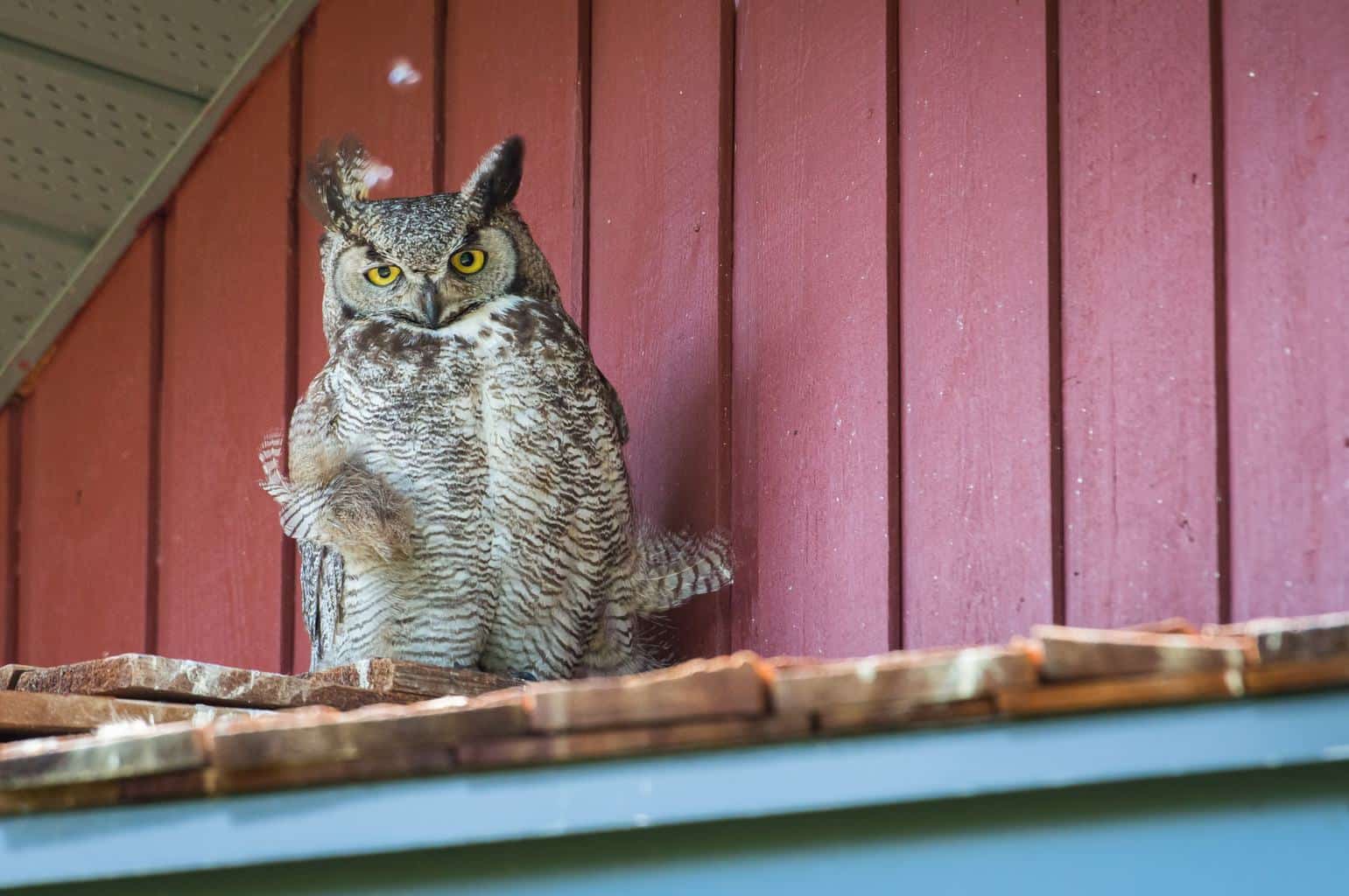
- Scientific Name: Bubo virginianus
- Length: 18.1-24.8 inches
- Weight: 32.1-88.2 ounces
- Wingspan: 39.8-57.1 inches
Great horned owls are among the most common species of owls found in the state of New Jersey. They’ve been living there for a very long time, and they’re commonly known as hoot or tiger owls.
The latter name is because of their exceptional orange faces and the contrasting white and black markings on their bodies and the patch of white feathers on their throats. They also have horn-like tufts of feathers on their heads, hence the species of birds’ common name.
The birds are among the state’s largest raptors and even feed on big prey, like squirrels and raccoons. You’ll commonly find them in the forest and wooded areas, but they’ve adapted well to living alongside humans, too.
Barred Owl
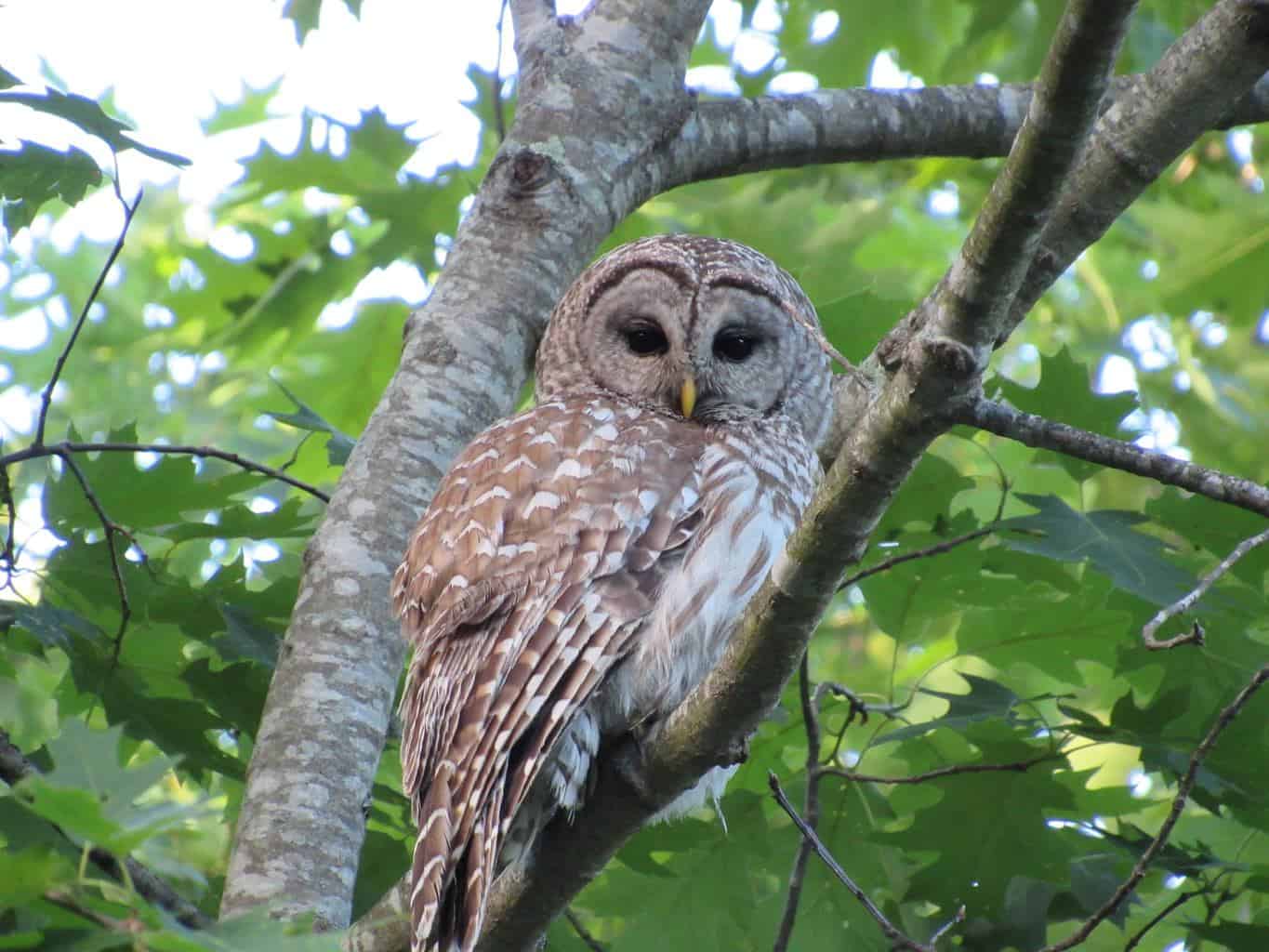
- Scientific Name: Strix varias
- Length: 16.9-19.7 inches
- Weight: 16.6-37.0 ounces
- Wingspan: 39.0-43.3 inches
Another of the Garden State’s iconic owls is the barred owl, and like the species above, you’ll hear New Jersey residents calling this bird the hoot owl, too.
Birds of this species are a natural combination of features of both the barn and great horned owls, as they have a heart-shaped facial disk like the former and reddish-brown marks on their bodies like the latter.
These owls are also common in other eastern U.S. states, like New Hampshire, and Canada, too. If you’re in these areas, you’ll be able to identify them easily by looking at the alternating dark and light brown horizontal stripes on their tails, backs, and wings.
Barn Owl
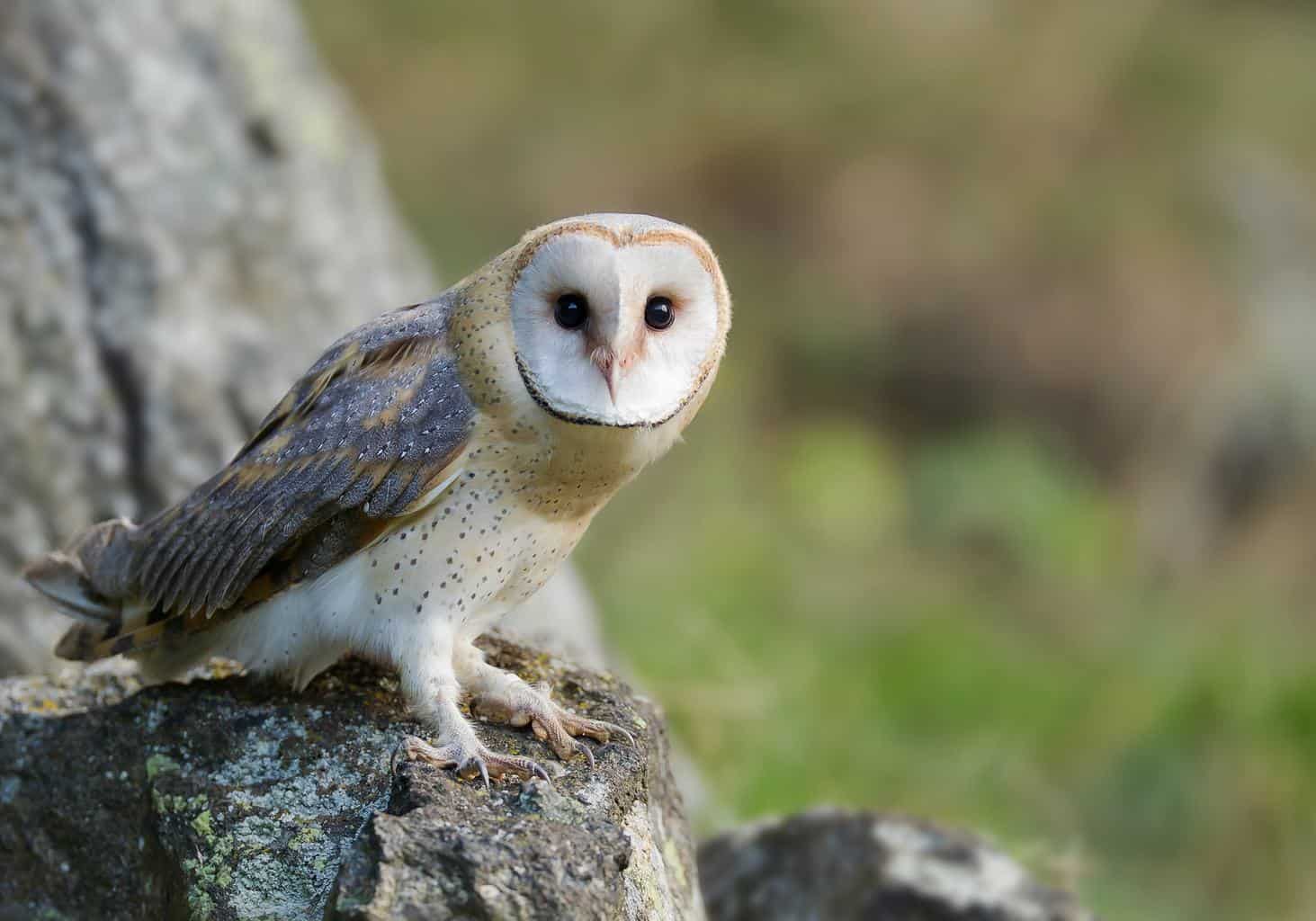
- Scientific Name: Tyto alba
- Length: 12.6-15.8 inches
- Weight: 14.1-24.7 ounces
- Wingspan: 39.4-49.2 inches
If ever there was an owl you could identify with no trouble at all, it would be the barn owl. Commonly known as the church owl, ghost owl, or monkey-faced owl, this bird is characterized by its smooth and round face as well as the white and buff body color.
The barn owl is a relatively medium-sized bird and has long, rounded wings and short tails. Its face is pale, smooth, and round with no ear tufts, and its legs are significantly longer than those of other owl species.
Despite being an owl that’s pretty much impossible to mistake for any other species, it’s still quite difficult to spot them during the day because barn owls are strictly nocturnal. However, you’ll have the most luck finding them by searching in old barns and natural tree cavities.
Snowy Owl
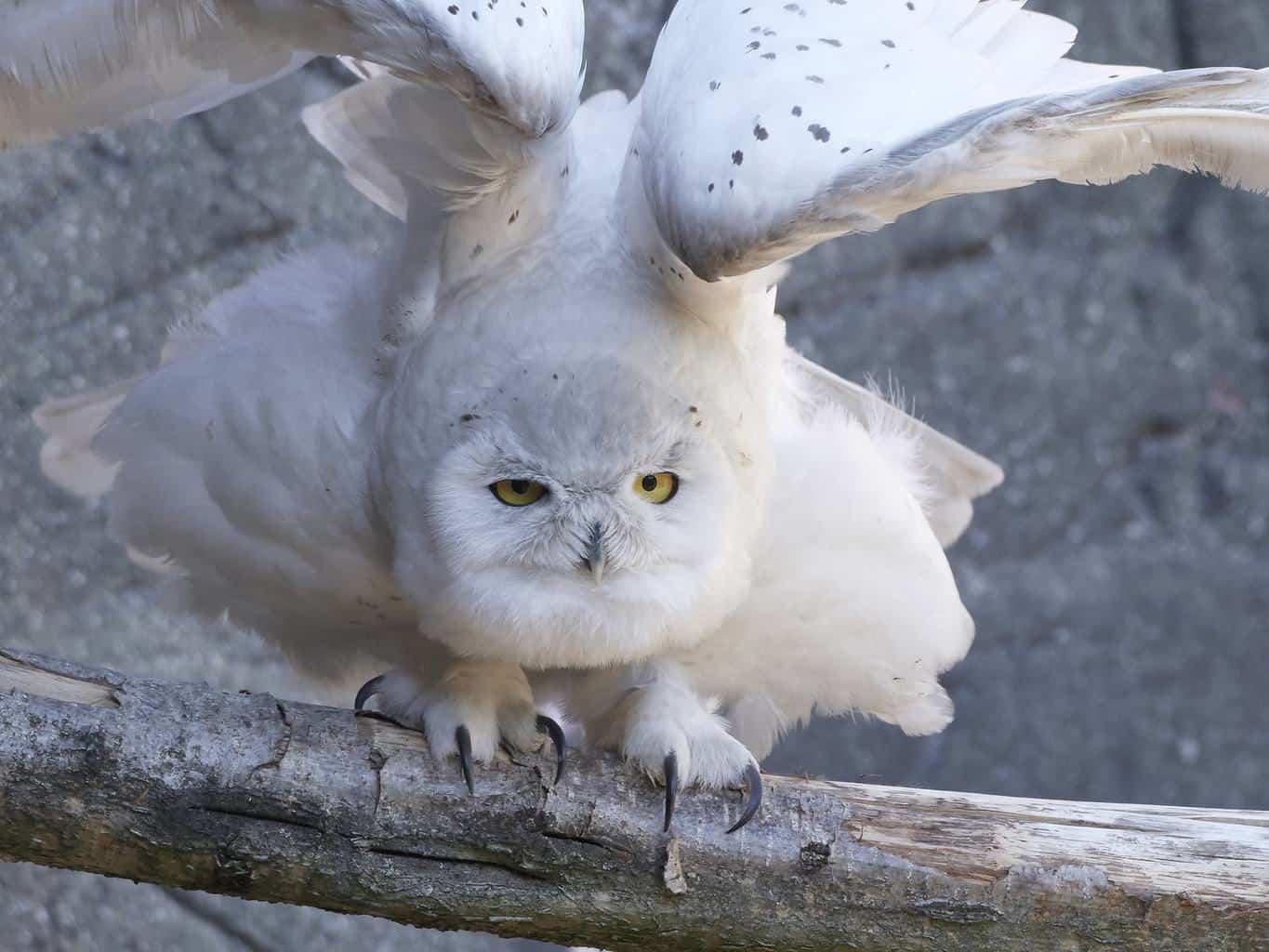
- Scientific Name: Bubo scandiacus
- Length: 20.5-27.9 inches
- Weight: 56.4-104.1 ounces
- Wingspan: 49.6-57.1 inches
Snowy owls like to live in relatively cold areas, making New Jersey a somewhat suitable habitat for them.
These birds of prey are mostly white, but some of them sport blackish dots and markings on their feathers. They’re quite large and have thick plumage, especially on their legs, which gives them a wide base while perching.
Snowy owls have no ear tufts and like to sit on telephone poles, dune crests, and even in open areas. Compared to many other owls, they have a mild temper around humans.
Short-Eared Owl
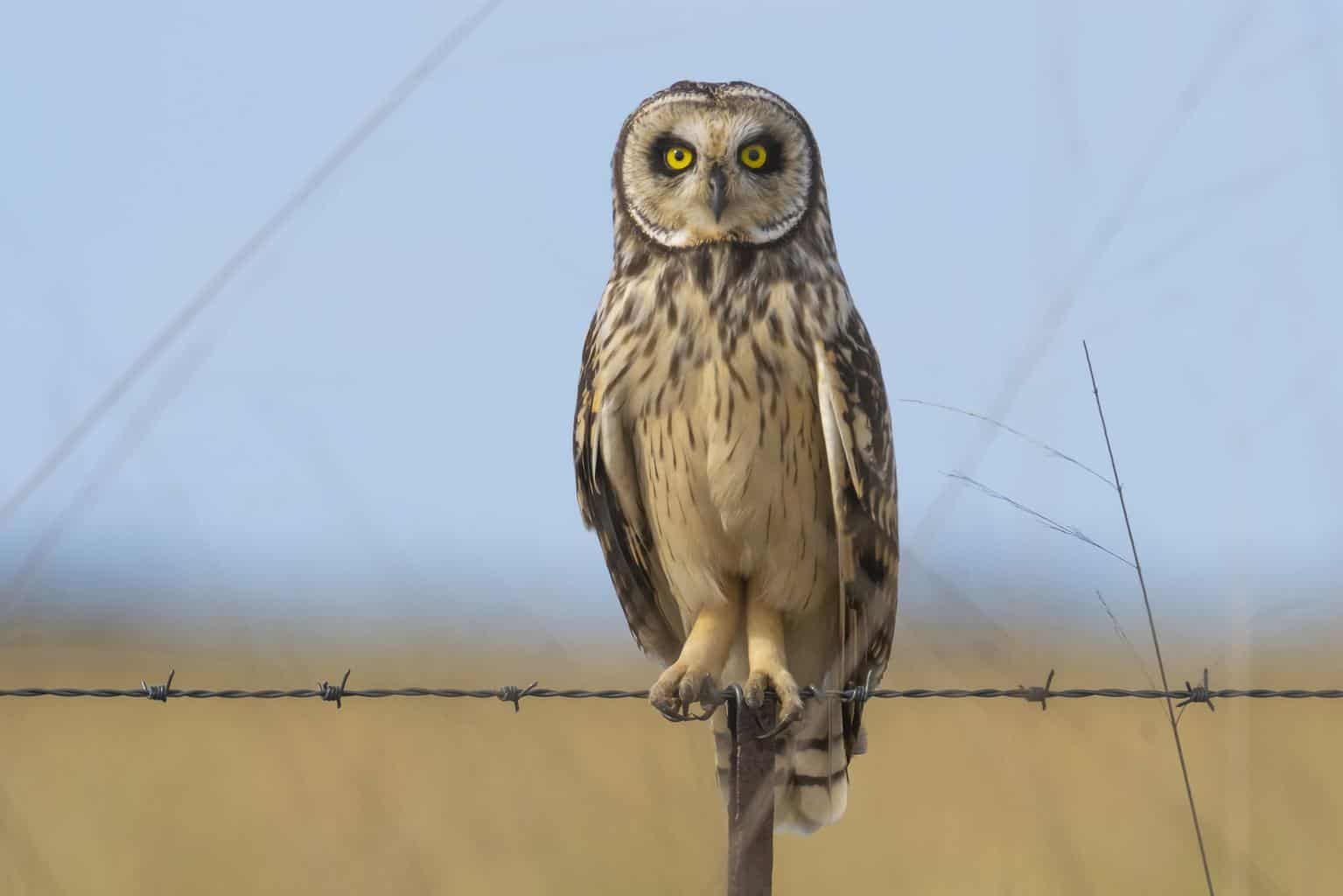
- Scientific Name: Asio flammeus
- Length: 13.4-16.9 inches
- Weight: 7.3-16.8 ounces
- Wingspan: 33.5-40.5 inches
Though the short-eared owl does technically have an ear tuft, it’s quite difficult to spot unless you manage to get up close to the bird.
Members of this species are medium-sized and sport rounded heads and yellowish facial disks that are edged with bright white marks. Usually, short-eared owls are covered in brown feathers and have white and beige mottling on their upperparts.
You’ll also easily recognize this owl by its pale face and yellow eyes and dark accents around its edges.
Long-Eared Owl
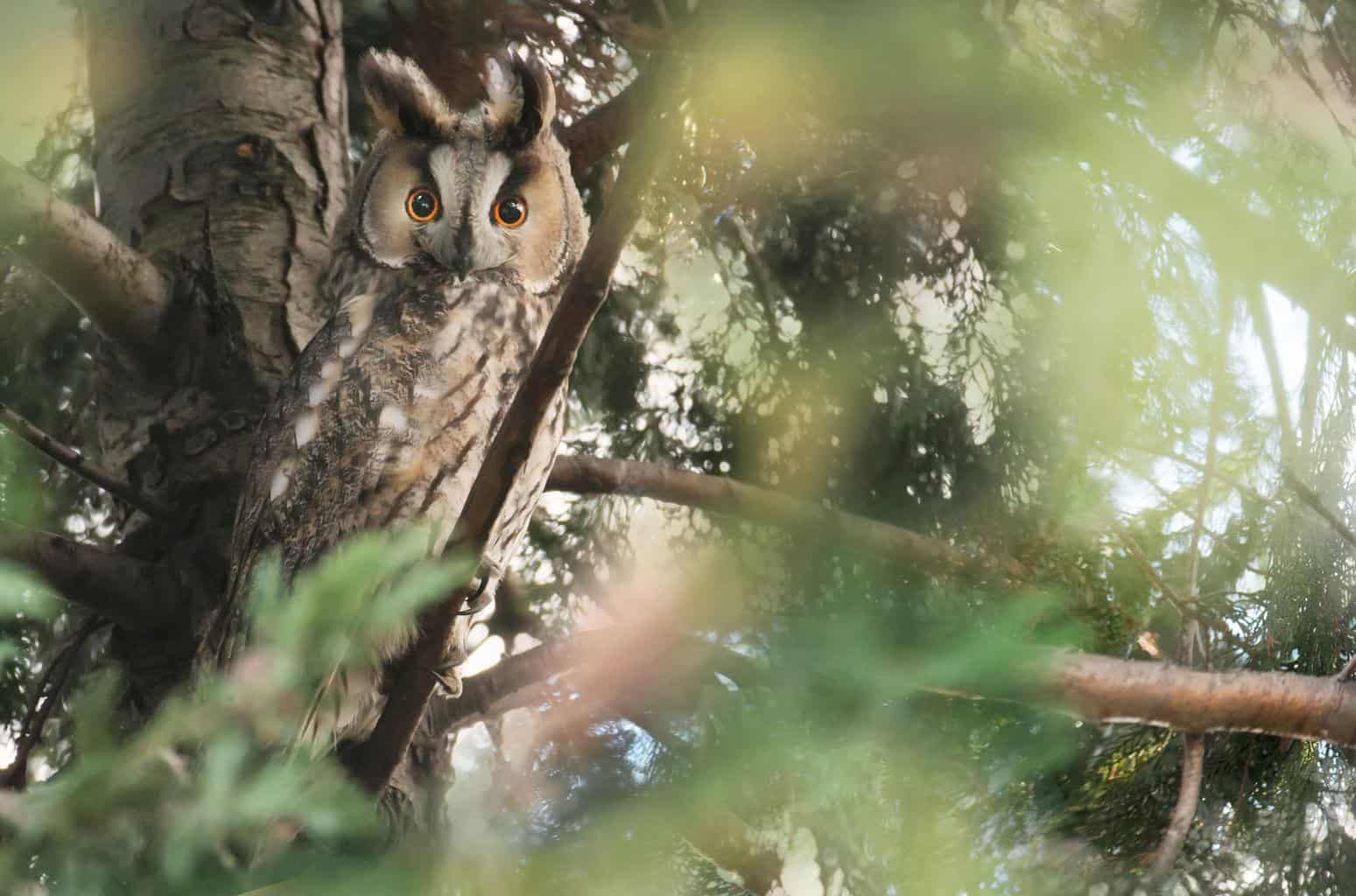
- Scientific Name: Asio otus
- Length: 13.8-15.8 inches
- Weight: 7.8-15.3 ounces
- Wingspan: 35.4-39.4 inches
Long-eared owls have oval heads, distinctive yellow facial disks, and a white “X” marking the space between their eyes. The birds’ eyes are yellow, sharp, and always giving off a surprised expression, especially when coupled with their ability to twist their heads upside down.
Yet, the most distinguishing feature of a long-eared owl is its ear tufts that are much longer than those of other owls, especially when compared to the size of its head.
Besides their distinctively long ear tufts, long-eared owls are generally buff to brown colored and live in grasslands and other open areas that allow easy foraging.
Northern Saw-Whet Owl
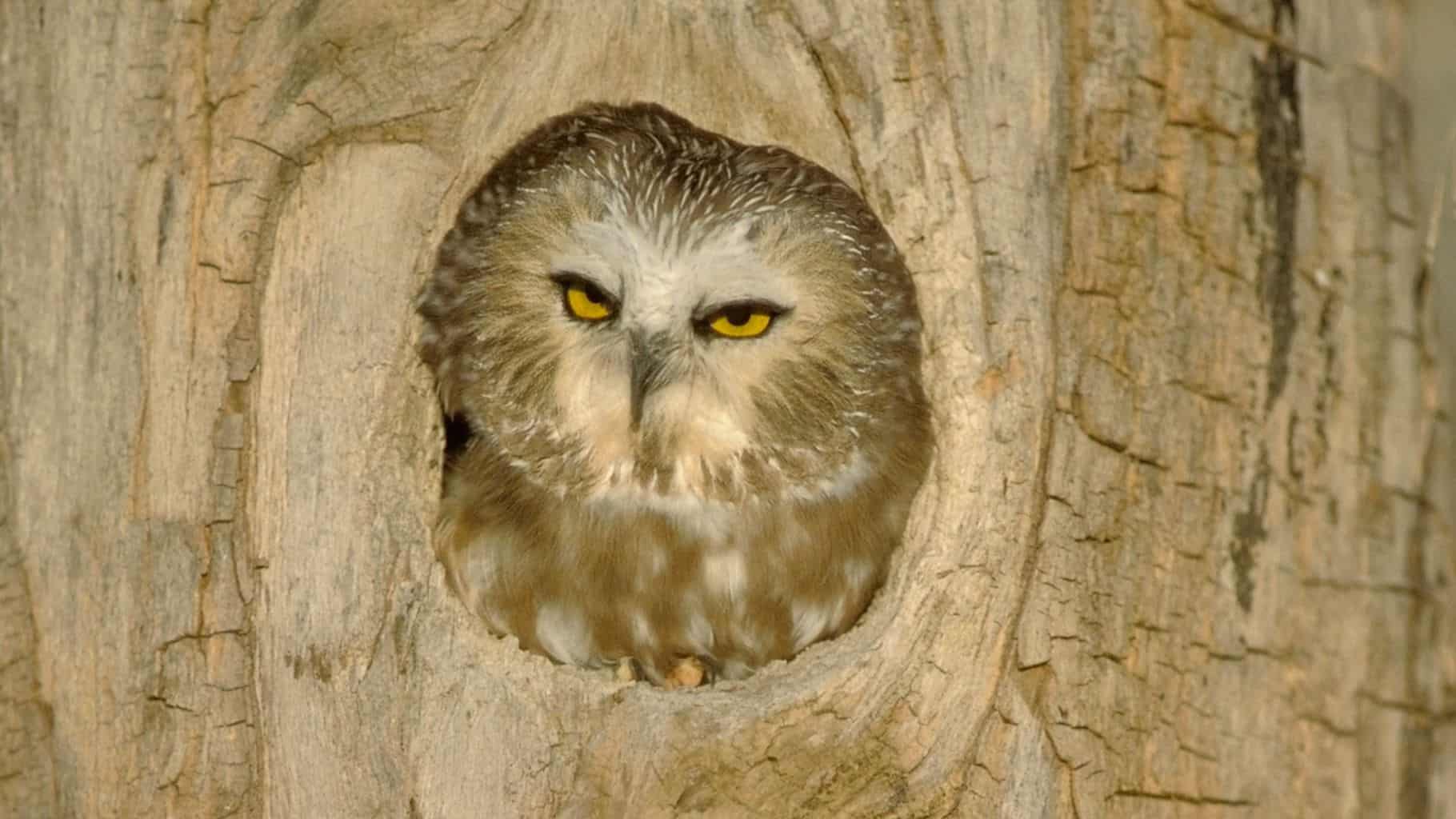
- Scientific Name: Aegolius acadicus
- Length: 7.1-8.3 inches
- Weight: 2.3-5.3 ounces
- Wingspan: 16.5-18.9 inches
The northern saw-whet owl is one of North America’s smallest owl species, and it’s the smallest owl in the eastern United States. Despite the bird’s small body, it has a large but smooth round head.
The owl wears mostly brownish-colored feathers with several whitish patterns and marks here and there. It also sports a white facial disk that’s not quite as defined as those of other species plus sharp yellow eyes.
Northern saw-whet owls are quite elusive and hard to spot, but you’ll easily hear their loud calls from wooded areas.
Boreal Owl
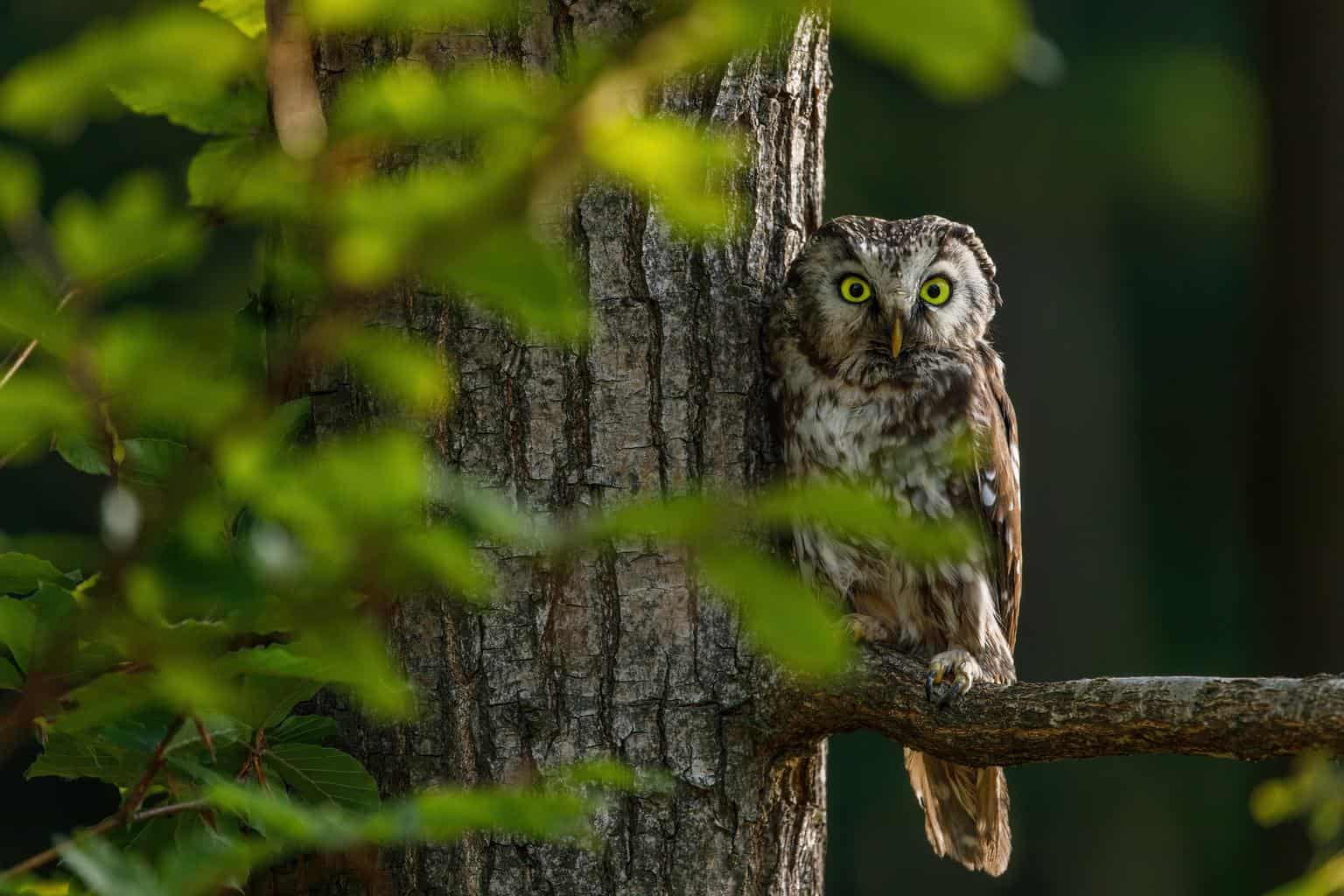
- Scientific Name: Aegolius funereus
- Length: 8.3-11.0 inches
- Weight: 3.3-7.6 ounces
- Wingspan: 21.6-24.4 inches
The boreal owl isn’t listed as one of New Jersey’s common birds, as it doesn’t typically prefer the climate on the northeastern portion of the United States. However, various claims and records of spotting the bird around the state are enough to consider it an irregular resident.
Boreal owls have relatively small bodies and big heads with earlike tufts of feathers. Their stocky brown feather structure gives them a volume that’s bigger than their actual mass, and their primary identifying feature is the white dots that mark the birds’ dark facial crown.
Northern Hawk-Owl
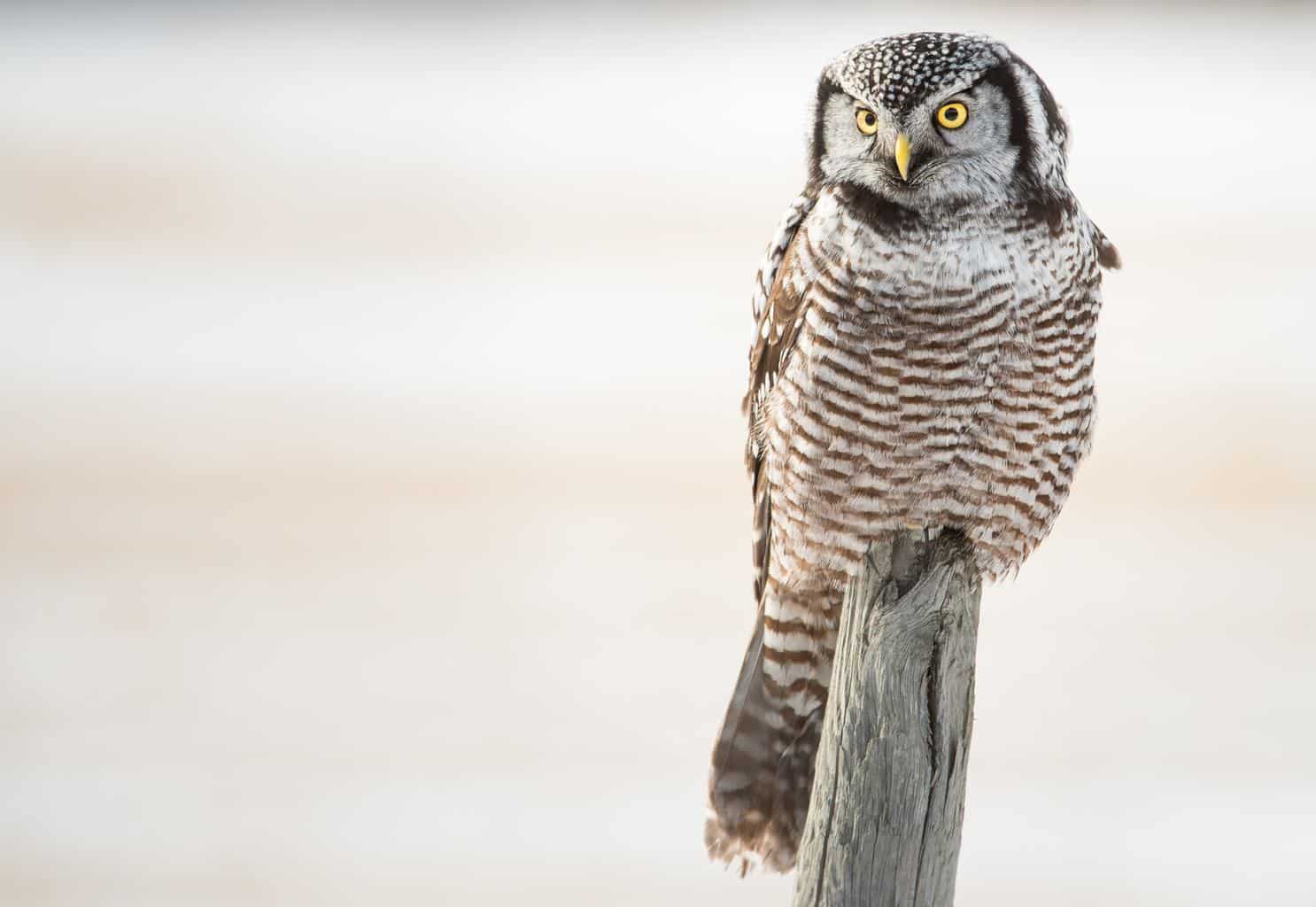
- Scientific Name: Surnia ulula
- Length: 14.2-17.7 inches
- Weight: 8.5-16.0 ounces
- Wingspan: 27.9 inches
The northern hawk-owl has a feather pattern that closely resembles that of a hawk, hence its name. It also has a medium-size, oval-shaped body and a long and pointy tail.
You’ll mostly find this species flitting about coniferous forests and open marshes during the day, but they have also been spotted at night.
Wrap Up
That concludes our list of owls in New Jersey! Despite the state’s small size, it has a very high density of owls as well as plenty of other birds you can spot in the Garden State’s 50 incredible parks. Happy birding!

